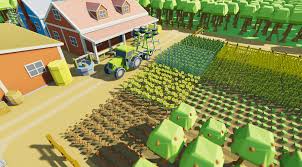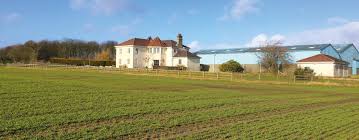Farm assets must be valued at least once a year, typically at the end of the accounting period for a specific farm. Depreciation of assets is essential for farm accounting to ensure the balance sheet reflects the true value of assets and to avoid overestimating the net farm income or farm profit.
Meaning and Importance of Valuation
A. Definition of Assets
Assets are items that hold monetary value and are owned by the agribusiness enterprise. Assets are classified as current, intermediate, and fixed assets. Current assets have a useful life of one year. Intermediate assets have a useful life ranging from two to five years, while fixed assets have a lifespan of six years and beyond.
B. Meaning of Valuation of Assets
Valuation of assets involves assigning prices to assets such as buildings, tractors, vehicles, crops on the farm, animals, etc. The methods used in valuation affect both the profit and loss account and the balance sheet. Therefore, it is important to apply the same valuation method consistently for all farm assets.
Read Also: Rabbit Reproduction: Pregnancy, Kindling, Sexing, and Weaning
Methods of Valuation of Farm Assets

There is no single method that is best for every situation. Different items can be valued in various ways:
A. Valuation at Market Cost
This method uses the price at which an item was purchased on the market. It is typically applied to recently purchased items scheduled for short-term use, such as feed, fuel, fertilizer, and seed.
B. Valuation at Net Market Price
In this method, asset valuation is based on the selling price minus transportation and marketing costs. It is used for items held primarily for sale or for which a market price is well established. Examples include market livestock, harvested crops, machinery, and breeding livestock.
C. Valuation at Cost or Market Value
Assets are valued using either the production cost or the original purchase price. The lower of these two amounts is selected after comparison with the current market price. This method is generally more conservative than the net market price and is used for items primarily held for sale or supplies to be used. Inputs like seed, fertilizer, and fuel can be valued this way.
Read Also: Rabbit Health and Diseases and How to Minimize Major Stresses
D. Valuation at Farm Production Cost
This method uses the cost of producing an asset on the farm for valuation purposes. It is applied to assets produced on the farm and intended for future use, such as breeding stock and standing crops.
E. Valuation at Cost Less Depreciation
This method is employed for valuing assets with a limited lifespan of more than one year, such as machinery, breeding stock, and fences.
F. Valuation at Cost Less Depletion
Used to value assets that are gradually depleted, this method subtracts the amount already used from the total asset value. It applies to natural resources like timber stands, mineral deposits, and oil wells.
Valuation of assets involves assigning costs to assets. Methods of asset valuation include valuation at market cost, net market price, farm production cost, and cost less depreciation or depletion. Each method is chosen based on the specific characteristics of the asset being valued.
Do you have any questions, suggestions, or contributions? If so, please feel free to use the comment box below to share your thoughts. We also encourage you to kindly share this information with others who might benefit from it. Since we can’t reach everyone at once, we truly appreciate your help in spreading the word. Thank you so much for your support and for sharing!

